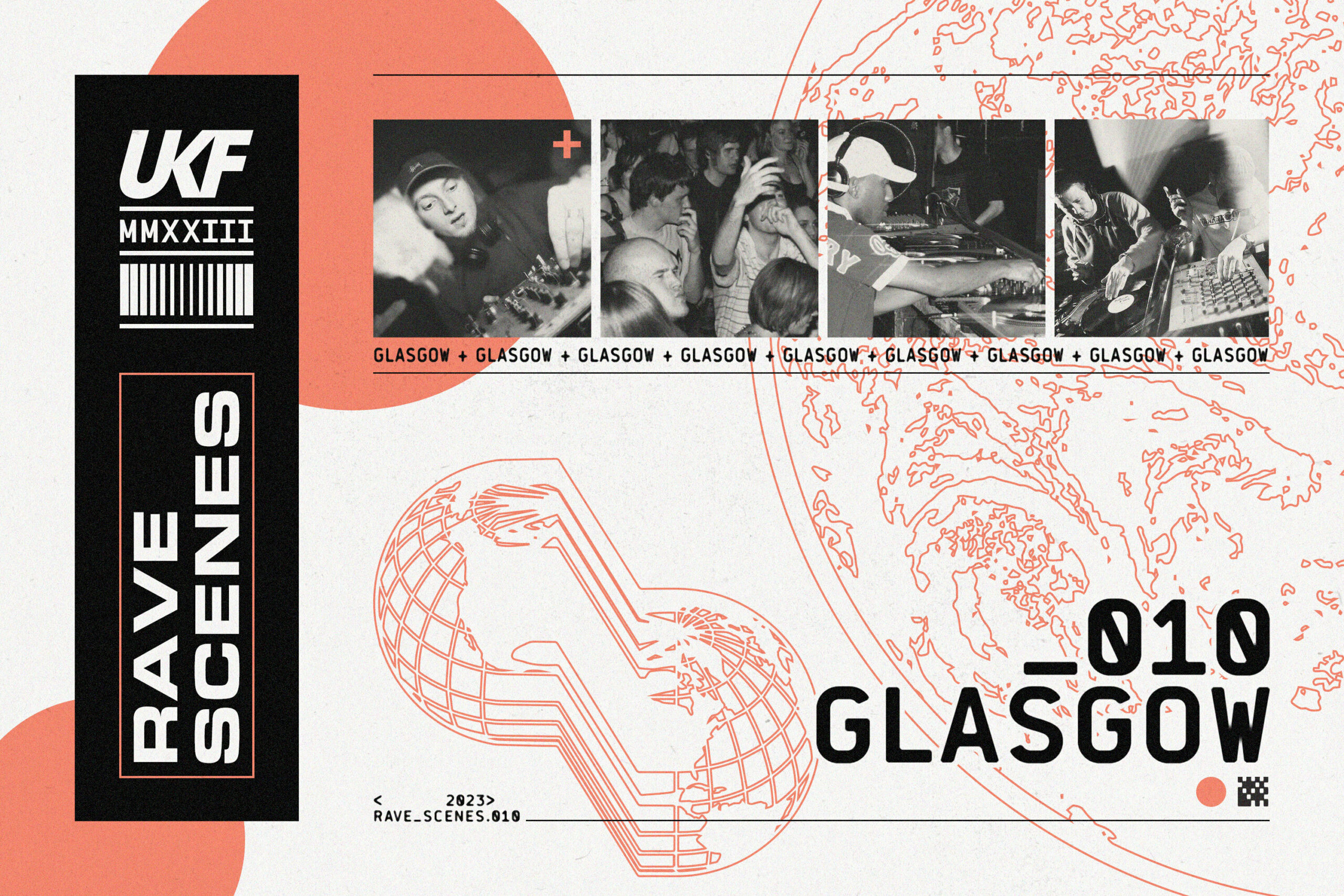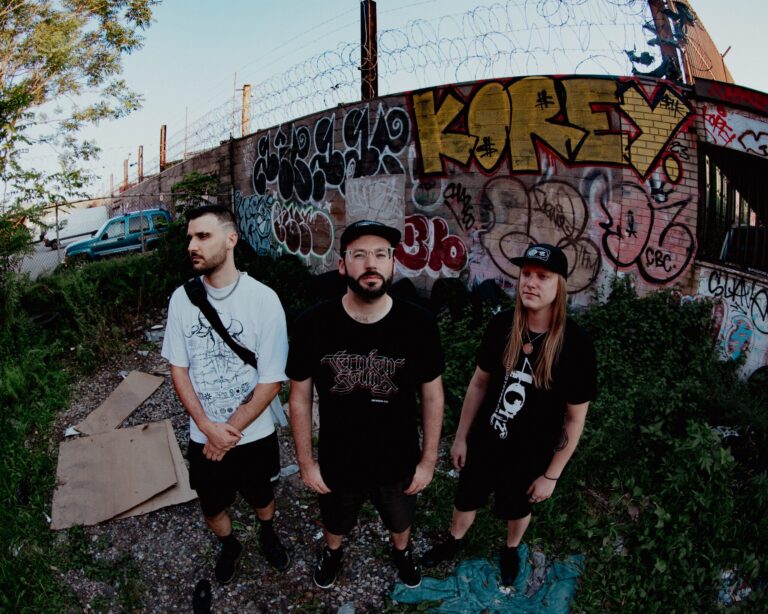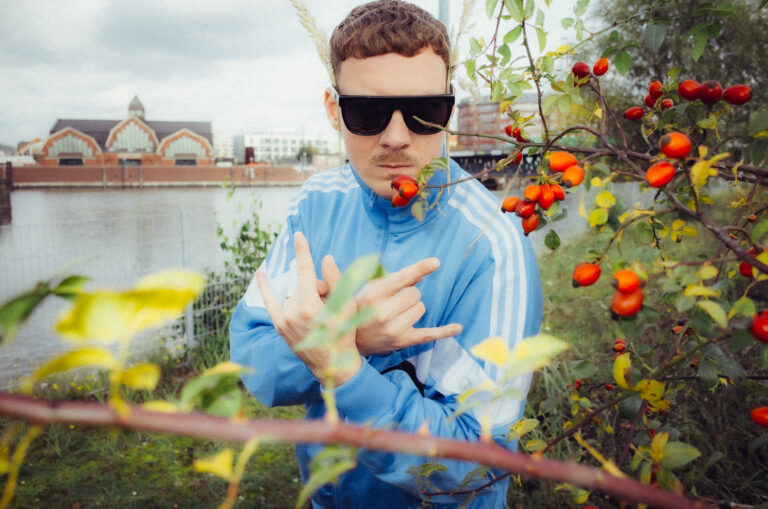When you speak to Glasgow’s club promoters about their city’s storied nightlife, one adage stands out above the rest: Glasgow is a techno city. Ever since the late 1980s, institutions like Slam, Soma, Sub Club, Pressure and Numbers have etched the Merchant City’s name into dance music’s history books, with techno’s 4/4 rhythms and propulsive kick drum ringing out from its basement clubs and after parties every weekend.
Drum & bass, so popular wisdom goes, has long been a casualty of house and techno’s west coast dominance. “The Glasgow scene was like the underdog of the underdog,” says Lee Batchelor, one half of the production duo Future Engineers. “In my experience, Edinburgh had a more thriving scene.” Thanks to early nights like Manga, the dense bass and rapidfire drum patterns blasting out of London found a northern bastion in Scotland’s capital, with breakbeat in Glasgow chronically dwarved.
But it would be wrong to discount Glasgow’s drum & bass scene. More than once, the city’s unique musical identity has shifted the shape the genre took elsewhere in the UK. Dig under its surface and you find a tightknit community of devoted heads, almost mulish in their commitment to bolstering breakbeat against the techno tide. “It’s a boutique scene, you know?” says producer imo-Lu. “It’s the small independent business of drum & bass.” “There is a stronghold of us battling through,” agrees Roo, who promotes Jungle Testaments. “Midnight Bass, Symbiosis, Bass Injection, ourselves and a new night called Basshaus – between four or five of us, we keep it afloat.”
Symbiosis is Glasgow’s longest running drum & bass night (second only to Aberdeens’s Jungle Nation as Scotland’s oldest d&b party). With 18 years under its belt, it’s seen its fair share of fluctuations in local bass music. “You get these peaks and troughs,” says Hex, who joined Symbiosis in 2010, and also used to manage DNB Dojo. “At times we’ve been the only game in town. We’ve taken some pride in that. There is an appetite for this. If we keep doing it, sooner or later another younger crew will come through.”
Promoting nights in Glasgow is a particular beast, Hex tells us, where punter tastes contradict the scene-wide consensus about marketable headliners. More than once, he has witnessed a fresh party book a big name for its premiere – invariably, these nights flop. “There’s a big swave of established drum & bass artists that work well in almost any city that you couldn’t work in Glasgow without losing money,” he says. Balancing the books is a tricky exercise when you’re a seven hour drive from London. After artist fees, travel fares and hotel bookings, the financial risk often outweighs potential gains. “I think London promoters can get a much better rate,” says Hex. “You look at the lineups in London and it’s 10 or 20 DJs on the lineup. They’re managing that because at least three quarters of them live in London.”
The nights that survive are the ones that get savvy. Symbiosis has typically got by with local DJs, focusing instead on curating a particular vibe at the darker end of the sonic spectrum. “It’s predominantly a tech and neuro night,” says Hex. “That’s our sweet spot.” The promoters in the city work closely together, coordinating to avoid clashes between themselves – and, at times, with nights in Edinburgh. You’ll find Bass Injection fielding the decks at Symbiosis, or Roo heading up Midnight Bass under his moniker, Roodboy. Jungle Testaments and Midnight Bass share the same flyer team to help cut costs. Hex reckons that the scene’s money struggles might even be an asset. “Pretty much all the other promoters are doing it because they love the music,” he says. “It’s much easier to connect with people on that level and be like, ‘Well, we all love this thing. We should be pals.’”
What sets the city’s scene apart most is its distinctively Glaswegian charm. imo-Lu recalls her first time DJing at Midnight Bass in Glasgow’s Berkley Suite: “There was one girl who stood in front of the decks and screamed the word ‘wummin’ for 20 minutes while I was playing,” she says. “I feel like, regardless of music genre, Glasgow is full of mental punters on a night out. You can’t take the Glasgow out of it. Even though it was drum & bass, all the classic Glaswegian hijinks were still there.”
A quintessential example of the city putting its stamp on drum & bass is the case of Kemal, who produced alongside Rob Data as Konflict at the turn of the millennium. Kemal’s initiation into dance music came through a JD Twitch and Brainstorm tape, and at 15 he headed out for his first clubbing experience at Volcano – the same club that features in the film Trainspotting. “I can remember going to school the next morning and hearing whistling through my ears. I was obviously deaf from how loud it was,” he says. Yet as a young teenager, Kemal’s clubbing options were mostly limited to under-18 events, which tended towards happy hardcore – something that Kemal was less than enamoured with. He threw himself into the city’s after party scene, learning to DJ at house parties where dancers gathered after the clubs shut. “They were so vibrant,” he says. “There were people coming in still full of energy and dancing to Chicago house and Detroit techno until six in the morning.”
When he got a job at the record store 23rd Precinct, Kemal was tasked with looking after the drum & bass section, where he began to dabble in the sounds of “Pulp Fiction”, Source Direct and Photek. “I liked the fact that it was something different from techno. Everyone was a techno DJ,” he says. He eventually threw in the towel with techno and devoted himself to drum & bass, teaming up with Rob Data, Stevie Elements and Tania Swift to put on the night Turbulence in the Art School (some DJs who made the trip north included Ed Rush, Alex Reese and Grooverider).
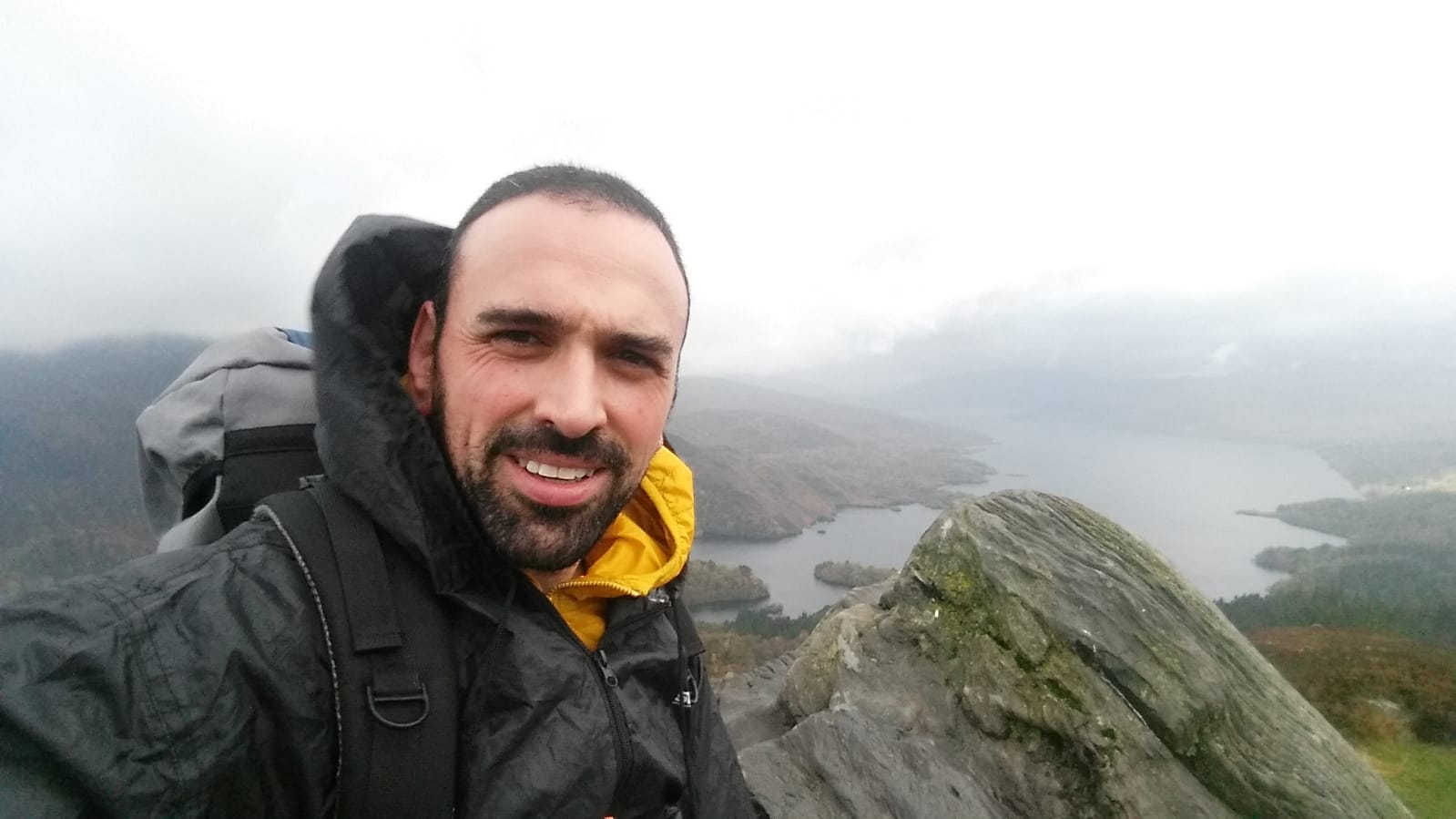
Kemal’s days of playing Detroit techno on the underground party circuit were behind him, but once he and Rob Data learnt to produce, his love for both genres triggered a groundbreaking alchemy. “I was influenced by Jeff Mills, Robert Hood, Dave Clark and some of the Chicago guys like Cashmere. When we were approaching drum & bass, these things just came out,” he says. “It was in things like arpeggiators, the kinds of percussion we would use – a lot of 909 rides and claps – and the structure of a techno track. A lot of them are more layered and building and not so focused on a drop.” It was this techy experimentation that led to Konflict anthems like “Messiah” – which Knowledge Magazine awarded first place in their list of essential 2010s d&b tracks – and has the duo credited for helping to inspire the neurofunk subgenre. “It seems we left a bit of a legacy,” says Kemal. “It is mesmerising to come back and be like, wow, people still remember our music.”
One raver in attendance at Turbulence was Paul Reset, who discovered drum & bass through a chance encounter with a live recording. “I used to go to Barras market in the town and buy rave tapes,” he says. “I randomly picked up a Randall tape. I don’t know why it was there. I’d never heard jungle and drum & bass like this. It changed everything for me.” He started buying records from Kemal at 23rd Precinct, with a preference for the growing neuro and techstep niche. But it was through his techie work – contributing to the website selekta.com, which hosted livestreams – that he got his entrance proper into the scene.
“This bunch of guys who were mates from Islay were going to put on this night called LiveVEvil,” he says. “The basic ethos of it was we didn’t want it to just be another club night. It’s five audio people versus five media people, so visuals are really crucial. We always had big screens and wee TVs around the place. It’s Live ‘v’ Evil – live is the audio and evil’s the video.” LiveVEvil launched in 1999, becoming the first club night to try livestreaming in Scotland. “The router was in a power thing off the dance floor, so I had to sit in this wee cupboard with my laptop plugged in, headphones on, checking the stream was up.”
LiveVEvil continued to look for new ways to package clubbing, most ambitiously with a boat party on Loch Lomond. “It was amazing, starting with tunes as you’re leaving the moor,” says Paul Reset. “A boat party in Scotland is quite a different proposition. I remember at one point the weather being quite bad and everybody hiding downstairs – luckily the decks were downstairs too.” Musically, they sought out the weirder, techier sides of drum & bass, deliberately setting themselves apart from the music policy of Manga. “Manga was your big hitters, your Hypes, your Andy Cs,” Paul Reset explains. LiveVEvil, on the other hand, booked Black Sun Empire’s UK debut – “bringing Black Sun Empire from Holland was probably cheaper than finding somebody from London” – and Metalheadz artists with a darker bent, like Photek and Dom & Roland.
For five years, LiveVEvil helped to provide a vital outlet for drum & bass fans in Scotland’s industrial capital. But even in spite of the returning faces that came to support each event, the promoters still felt the slog. “Whereas in Edinburgh, Manga had spent a lot of time building up that audience, Glasgow always felt like a harder sell,” Paul Reset says. “If you had a night that clashed with Pressure, you’d be screwed. Game over. Don’t bother.” Part of Edinburgh’s advantage, he tells us, was its higher English student population.
“The general reckoning is that in Edinburgh there’s more of a scene because of English students. It’s always been more of an English genre,” Hex elaborates. But if the English are what drives drum & bass in the east, a more surprising incubator lies behind some of the Glaswegian scene – Dumfries & Galloway, the largely rural county south of Glasgow. “Dumfries seems to really punch above its weight for all kinds of music,” says Hex. “There’s one club in Dumfries. It’s a small place. I think, because of that, you’ve got lots of young people with lots of time on their hands. You get loads of musicians.”
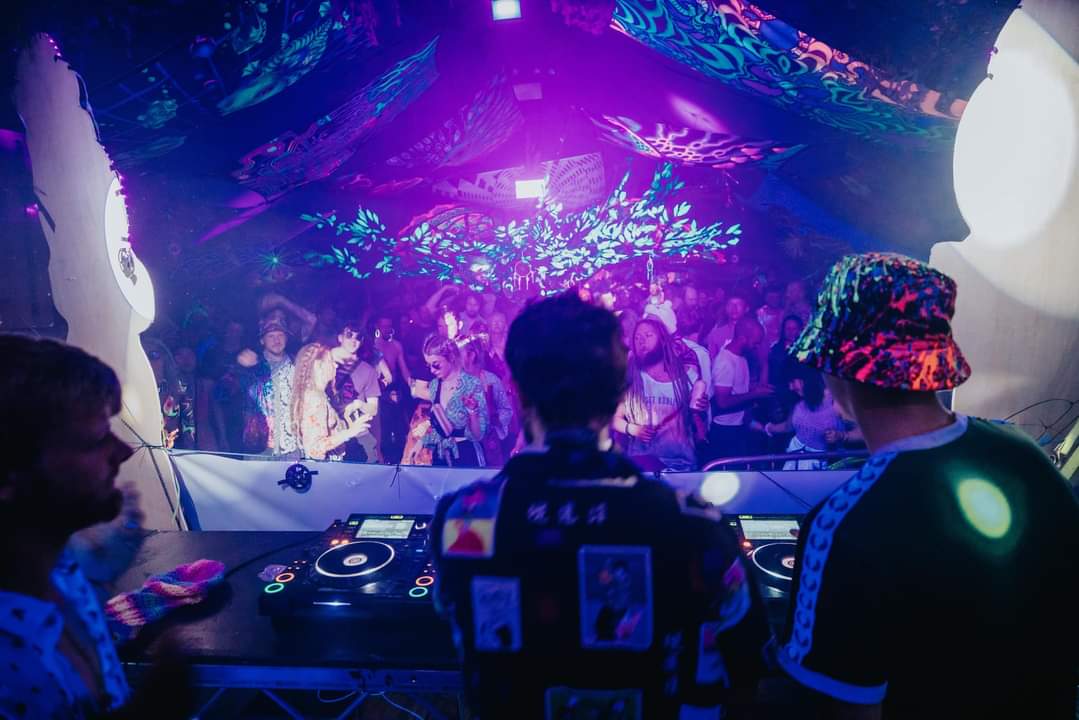
“There’s a big free party scene, you’ve got Eden festival, so there’s a lot of free party energy with not that many outlets,” says Roo, who spent his early teens either blasting Pendulum and Noisia at home or raving in the woods around Galloway. Just a few years behind him were Bass Injection, who were also inspired to start their own club night after moving up. “A lot of our friends and local DJs would put on small parties,” says promoter Michael Smith. “Glasgow is the nearest big city to Dumfries & Galloway, so I think a lot of the people who are into that sort of music in Dumfries come here.”
Nowadays, Bass Injection serves a harder sound to Glasgow from The Flying Duck. “Me and Stuart had moved and noticed that there was a gap in the scene,” says Smith. “There were definitely a few nights going on, but the stuff that we listen to is more like jump up and neurofunk.” As for Jungle Testaments, well, the clue is in the name. Wanting to give his sound system, Cenote Sounds, an outing during the winter months, Roo has built a home for jungle, dub and ragga, with repeat visits from Born on Road and Amen4Tekno members. “That’s our flavour. A lot of the times I book travel, the artist ends up being from Bristol,” he says. But old habits die hard in Glasgow. “It’s generally getting harder and faster towards the more techno side of jungle.”
One thing that has changed things significantly in Glasgow, most promoters agree, is the arrival of Midnight Bass. Founded as a weekly student night in Edinburgh, the brand launched its Glasgow branch in 2021, and has since helped to bring some of d&b’s biggest names back to the Merchant City. “Midnight Bass has had some pretty massive bookings,” says imo-Lu. “I warmed up for Goldie in September, which is still surreal and hilarious, in a basement on Sauchiehall Street.” “It’s been a massive improvement since Midnight Bass,” says Smith. “Because of the big following that they had, it opened a lot of people’s eyes to drum & bass.”
Midnight Bass, like its Edinburgh counterpart, runs every Tuesday, which steers it towards young students going out in the city. “It’s a fun crowd. It’s a bouncy crowd,” says Hex. “They’re up for it, but they’re looking to be entertained, not educated. It’s not a chin-stroking crowd.” Then again, that preference for the less pensive stuff might just be part of the Glasgwegian culture, where hard techno reigns supreme. “Scotland has always had a weird thing about drums and breakbeats,” says Paul Reset. “In the mid-nineties, breakbeat hardcore was huge down south. But in Scotland, that stuff never took off. Scottish hardcore was always just a flat four to the floor with no breaks.”
“This is the city of people driving past with hardstyle coming out of the car,” says imo-Lu, whose own production style is an outlier in the city, aligned more with liquid-oriented labels like Hospitality and Blu Mar Ten. “Where’s the wannabe Calibre producer going to go?” she asks. “I was very downtrodden about the fact that there’s not a lot of what I’m into going on here. But I’ve chilled out about it a lot. I think there’s definitely an advantage to not being at the centre of something.” She describes a creative freedom that comes from producing drum & bass so far away from its southern motherland. Distance begets imperviousness to whatever is trending, which has allowed imo-Lu to concentrate on honing her own sound.
In a way, imo-Lu is repeating history. In 1994, two teenagers had landed in Glasgow fresh from London, where breakbeat was then taking off. With two musical parents (Batchelor and Keir Cleminson’s dads both worked with The Sensational Alex Harvey Band), it was inevitable that the boys would start producing. But Batchelor describes finding a city dysmally underserved, to his view, by breaks, which meant few peers to pick up bass science tricks from. The elder KMC turned out to be a saving grace, becoming a mentor to the nascent Future Engineers. “KMC felt like the only person in Glasgow that was on our wavelength,” says Batchelor. “He’d already had a couple of releases out when we approached him. We were still writing demos, but he was very encouraging.”
KMC’s connections were pivotal for Future Engineers who, like him, dove into the Atmospheric drum & bass niche. “It was always on our bucket list to get a release on Good Looking,” says Batchelor. When LTJ Bukem featured KMC’s track “System” on Progression Sessions, the door was opened. “We played a gig with Bukem in Glasgow, and we gave him a DAT,” Batchelor recalls. “One of the tracks he played, he cut to dubplate and started playing.” Future Engineers sent Bukem more demos, finally grabbing him with “Timeshift”, which featured in the third volume of Progression Sessions. The duo signed with Good Looking Records in 2001.
Batchelor views his and Cleminson’s solitary ventures as both a blessing and a curse. “I think it was good because we were out of the way of all the bullshit and politics,” he says. “We’d just do our own thing and hide in Scotland.” But the opportunities that living amongst drum & bass’s main players could have afforded are undeniable. “Collaboration is great because you learn from other people, which I don’t think we had as much of because we were so isolated,” says Batchelor. “Now with the internet, you can collaborate with anyone all over the world.” imo-Lu can attest to the web’s transformational effects. “I got found off the internet by an English label,” she says of her career’s genesis.
Thanks to the likes of imo-Lu, Hex and a return to music by Kemal and Future Engineers, Glaswegian production continues to make itself known. But what of the local live scene? “For a city that traditionally doesn’t have much of a drum & bass scene to sustain three-ish regular drum & bass nights, that feels healthy to me,” says Hex. “I would say it’s improved a lot. It was quite quiet when I first moved to Glasgow and started Bass Injection,” agrees Smith. “In terms of regular events, it’s definitely thriving more.”
There is one dissenting voice – Roo is currently in the throes of Jungle Testaments’ final season, after struggling against the cost of living crisis. “The rising cost of venues, artist’s flights, hotels, van hire, promotional costs, it all adds up. I’ve always tried to keep it affordable for everyone, but it’s remaining harder and harder,” he says. It’s a stark reminder of how vulnerable our smaller music scenes can be. Without care, vital eco-systems connecting disparate fans to the genres they love could be wiped out.
But there are advantages to a compact set-up too. “You can get up close and personal with the touring artists,” says Roo. “You quite often find that the artists have more of a good time on those nights when it’s intimate and will vibe off the crowd. Then everyone’s left with this really special feeling of, ‘Wow, that was quite something.’”
“The crowds tend to be smaller, but they’re more dedicated,” says Hex. “If you’re at Symbiosis, it’s because you want to be at a drum & bass night.”
“Drum & bass to me is really all about connections between people,” says Paul Reset. “If you have a small scene, people know each other and start to build up that community feeling.”That community keeps powering Glasgow’s scene, attracting die-hard fans who stubbornly maintain a breakbeat presence in Scotland’s techno capital. Their endurance is proof that even the smallest scenes can make their mark (and even drum & bass isn’t immune to Glaswegian patter). “You need to come up to Glasgow, because you need to experience how different it is,” says imo-Lu. “It will make you laugh with us at how small it is and how rogue some of the characters are. When you come to Glasgow, it’s so much weirder and more a microcosm of nightlife in the city in general.”
